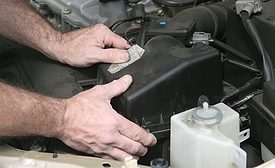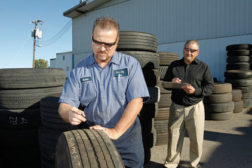Home » Keywords: » maintenance
Items Tagged with 'maintenance'
ARTICLES
Machinery maintenance takes on proactive approach
Read More
Operations Perspective
Regular maintenance a necessity for beverage warehouses
Policies help maintenance keep facilities operational
October 26, 2021
Distribution
Scheduling preventative maintenance is not without its issues for fleets
Avoiding common mistakes can help your beverage fleet runnings
April 12, 2020
Beverage operators must develop effective maintenance plans
Preventative, emergency plans necessary for effective program
February 25, 2019
Honeywell Intelligrated launches augmented reality solution
TechSight features two-way audio and visual communication for troubleshooting
June 25, 2018
How to balance emergency, preventative maintenance
Managing emergency, preventative maintenance improves operations, prevents downtime
June 15, 2016
Springtime maintenance can prevent downtime for beverage trucks
Battery, starter and alternator among electrical systems to test
April 15, 2016
Vehicle disposal more than an end-of-use concern
A fleet’s lifecycle, maintenance can increase disposal options
September 12, 2011
Scrap tire analysis can reduce costs
Columnist David Kolman recommends analyzing scrap tires for fleet maintenance information.
May 17, 2011
Elevate your expertise in the beverage marketplace with unparalleled insights and connections.
Join thousands of beverage professionals today. Shouldn’t you know what they know?
JOIN NOW!Copyright ©2025. All Rights Reserved BNP Media.
Design, CMS, Hosting & Web Development :: ePublishing






